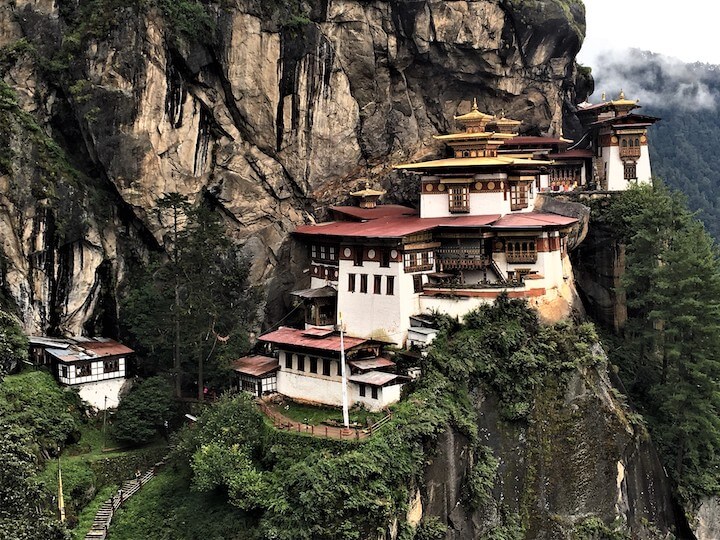 The Buddhist Kingdom of Bhutan lies along the lofty ridges of the eastern Himalayas, bordering the Tibetan Autonomous Region of China in the North and North-West and the Indian states of Sikkim in the West and South-West, Assam in the south, Arunachal Pradesh in the East and South-East and West Bengal in South and South-West. The country within these borders forms a giant staircase, from a narrow strip of land in the south to some of the highest unclimbed Himalayan peaks on earth.
The Buddhist Kingdom of Bhutan lies along the lofty ridges of the eastern Himalayas, bordering the Tibetan Autonomous Region of China in the North and North-West and the Indian states of Sikkim in the West and South-West, Assam in the south, Arunachal Pradesh in the East and South-East and West Bengal in South and South-West. The country within these borders forms a giant staircase, from a narrow strip of land in the south to some of the highest unclimbed Himalayan peaks on earth.
With an area of 38,394 square kilometres, Bhutan is comparable to Switzerland both in its size and topography, being largely mountainous.
It was the mighty Himalayas that protected Bhutan from the rest of the world and left the Kingdom blissfully untouched. The Drukpa Kagyupa sect of Mahayana Buddhism provided the essence of rich culture and fascinating history. The Bhutanese people protected this sacred heritage and a unique identity for centuries by choosing to remain shrouded deeply in a jealously guarded isolation.
With a relatively small population of 754,000 people, Bhutan enjoys a sustainable lifestyle which they inherited from their forefathers. About 80% population of the country still live in small villages sparsely scattered over rugged mountain land. Buddhism, prevalent in the country since the 7th century and continues to play important role in their peaceful lives.
For centuries, Bhutanese have treasured the natural environment and have looked upon it as the source of all life. This traditional reverence for nature has delivered Bhutan into the 21st century with an environment still richly intact. More than 72% of the land area is still under forest cover. The country has been identified as one of the ten bio-diversity hot spots in the world and as one of the 221 global endemic bird areas. Its Eco-system harbours some of the most exotic species of the eastern Himalayas with an estimated 770 species of birds and 50 species of rhododendrons, besides an astonishing variety of medicinal plants and orchids. Many parts of the country which have been declared as wildlife reserves are the natural habitat of rare species of both flora and fauna.
During the second half of the 20th century, Bhutan has seen its isolation steadily eroded by the inexorable forces of progress and development. Until then it was a country shrouded in mystery, untainted by any foreign influence. Although its seclusion prevented the Kingdom from fully benefiting from many developments of the modern world, but it also shielded the country from many of the detrimental side effects of unplanned or haphazard development. As a result, while most of the Himalayan region has seen its natural resource base severely compromised through deforestation, soil degradation, erosion and pollution, while Bhutan's natural patrimony of extensive and varied forests, limited yet fertile and productive farmland, and pristine water and air remains largely intact.
With its beautiful and largely unspoiled Himalayan setting, its rich flora and fauna and its vibrant Buddhist culture, Bhutan has become an increasingly popular destination for international travellers. Since the inception of tourism in the year 1974, the Royal Government of Bhutan has adopted a very cautious and judicious approach to the growth and development of tourism in the country. The Bhutanese tourism industry is based on the principle of sustainability that is ‘tourism must be environmentally and ecologically friendly, socially and culturally acceptable and economically viable’. Endowed with a rich living culture and pristine natural environment complemented by a development philosophy that espouses balanced growth, Bhutan continues to gain momentum as a high-end destination in South- Asia for discerning travellers.